What kind of painting do you like?"
You may have experienced this kind of topic when playing around in a museum or when talking about art.
There are many different types of paintings in the world, and they are categorized according to the material they are painted on.
Of all the paintings found in Japanese museums, oil paintings are probably the ones you are most familiar with and have seen. Famous foreign artists such as Van Gogh, Monet, and Picasso used oil paintings for their paintings in most cases.
What is oil painting again?
In this article, I would like to explain the mysterious and fascinating art medium of oil paint, and also cover how you can enjoy oil painting, as well as recommended oil painting artworks.
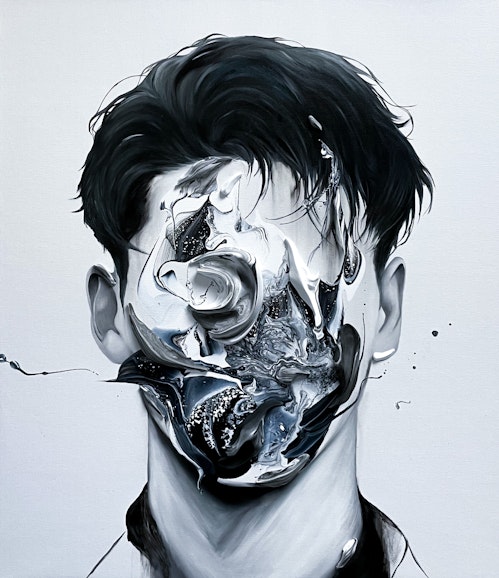
Nameless 1723 by Norris Yim
W 60.00cm x H 70.00cm / ¥222,500
What are the characteristics of oil painting?
(1) Dissolving with oil
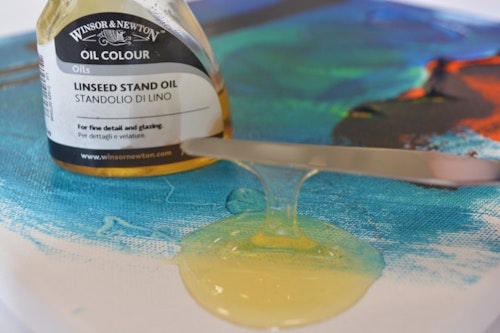
The most important difference between oil painting and other painting materials such as watercolors, pencils, and pastels is that oil is used to dissolve the paint.
Basically, the pigments themselves, which are the source of the various colors across a wide range of painting materials, remain the same. (Of course, it is assumed that different manufacturers and labels have their own colors.)
Whether it is cadmium red in oil paint or cadmium red in transparent watercolor paint, the pigment from which the paint is made is the same. What makes the difference is the substance that "adheres" the pigment to the material on the side to be painted, so to speak, called the "support" such as paper or canvas.
Paint is made of "pigment" + "adhesive.
In the case of oil paint, the adhesive is a type of oil called dry oil. In the case of watercolors, the adhesive is a substance called gum arabic. Gum arabic is soluble in water (water-soluble), and as the water evaporates, the pigments adhere firmly to the support, such as paper.
In contrast, dry oil dries by oxidation of the oil, i.e., the oil molecules combine with oxygen, and the pigments adhere to the support, such as canvas.
(2) Difficult to dry
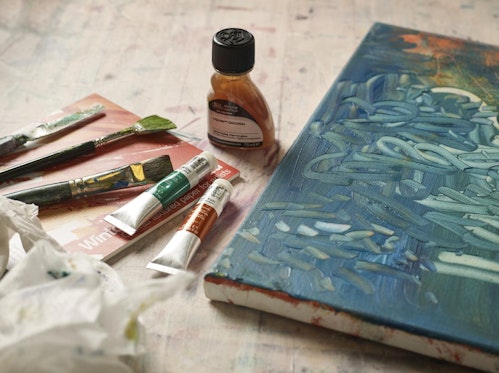
The speed at which a type of oil called "dry oil" oxidizes is much slower than the speed at which water evaporates.
It takes 1~3 days for the paint to dry to the touch (surface dryness), and in the case of extremely thick paints, it may take several months to a year for the paint to dry completely inside the paint layer.
Therefore, it is possible to slowly create colors and gradations without worrying about drying time during a single painting, but conversely, if you want to paint after the next painting has dried, you must leave the paint for several days or else you may inadvertently scrape off the half-dried paint.
(iii) Easy to create colors
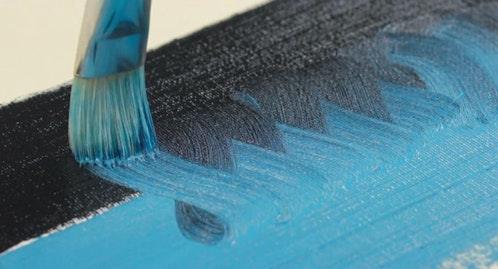
As mentioned in the section above, one of the greatest advantages of slow drying is the ease of creating gradations.
It is also possible to use oil paints in such a way that the paint dries with such transparency that the underlying layers appear transparent. Even after the paint has dried and hardened, it can have a luminous quality as if it were still freshly painted and wet.
(4) Wide range of matière
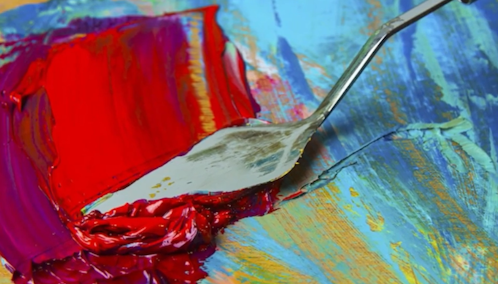
Matière is a French word meaning "surface texture.
Oil paints can be used with a higher viscosity than watercolors in particular. If the paint is placed on the canvas straight out of the tube, it is even possible to control the unevenness of the surface as if one were working with clay.
The surface of the canvas can be made to look rough and rugged, or smooth and flat. Oil paint offers more freedom in the expression of texture than any other painting medium.
How to Enjoy Oil Painting
In the above section, we have explained the unique properties of oil paints.
In this section, we will introduce how you can enjoy the expression itself in painting, and also how you, as a viewer, can enjoy looking at what is being expressed.
Motifs of Oil Paintings
Oil paintings can be classified into various categories according to motifs, ranging from still lifes, portraits, and landscapes to abstract paintings of mental landscapes that do not involve figurative representation.
A quiet landscape or still life that would not look out of place hanging in a living room or by a desk in one's room, or a vivid abstract painting that would create a spectacular atmosphere in a guest room, a space with a completely different atmosphere and meaning can be created depending on the motif or theme.
The collaboration of multiple works of art also creates a one-of-a-kind space.
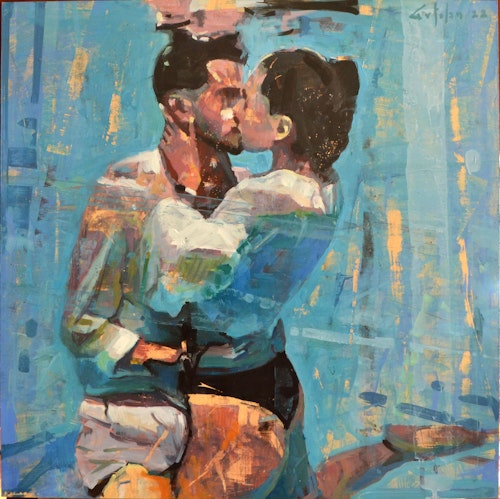
Kissing Underwater by Marco Ortolan
W 42.00cm x H 42.00cm / ¥101,100
The subject of the painting is free. The way of painting is also free.
Since oil painting has a long history dating back hundreds of years, it must be based on tradition...
That is not true. How do we make the most of oil paints and canvas? How will they be presented to the viewer? This is left to the will of the artist living in the present.
We do not know if you are a painter or a collector.
Either way, you will be able to experience oil painting, the most traditional and most cutting-edge material, more deeply by using and appreciating it with the knowledge gained from this article.
Use the knowledge gained in this paper to create a three-dimensional experience the next time you are exposed to oil painting.
Recommended Oil Painting Artwork
Here are some oil paintings that are created using various types of techniques.
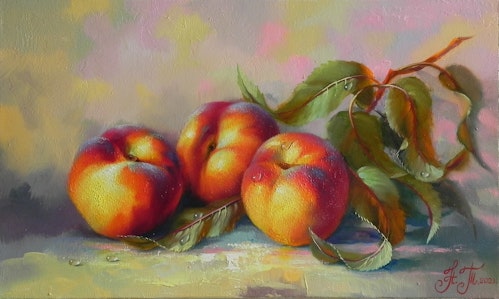
Peaches by Tetiana Novikova
W 50.00cm x H 30.00cm / ¥27,000

Alto Lago by Antonino Puliafico
W 90.00cm x H 80.00cm / ¥229,200
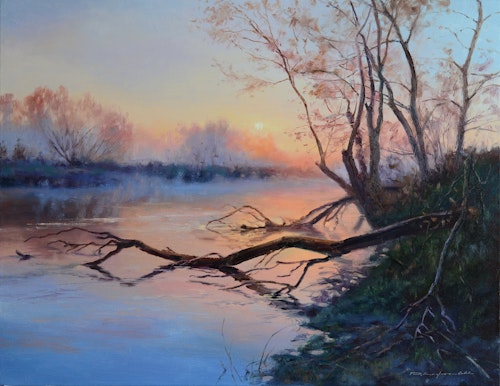
Pink mist by Ruslan Kiprich
W 65.00cm x H 50.00cm / ¥120,000
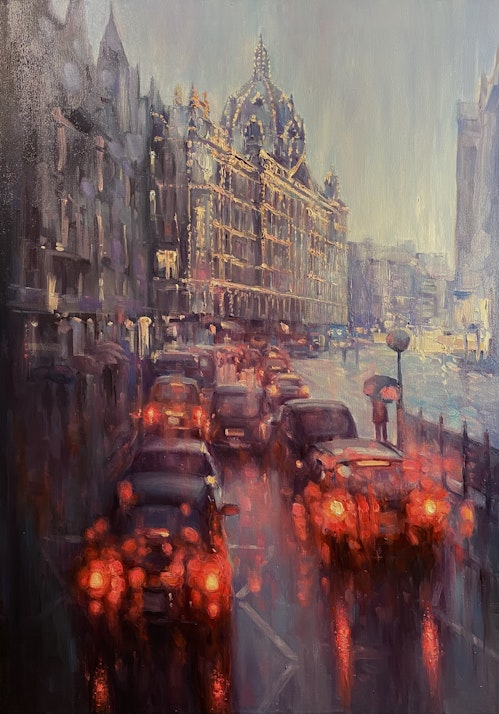
Rainy London by Artem
W 50.00cm x H 70.00cm / ¥128,100
TRiCERA ART members enjoy a variety of special privileges and preferences.
- Discounts such as members-only secret sales and coupons
- Create your own collection by registering your favorite artists
- Receive updates on popular artists, exhibitions, and events
- Receive a weekly newsletter with selected art
- Personal Assessment to find out what kind of art you like.
Please register as a member for free and receive the latest information.
Free Member Registration